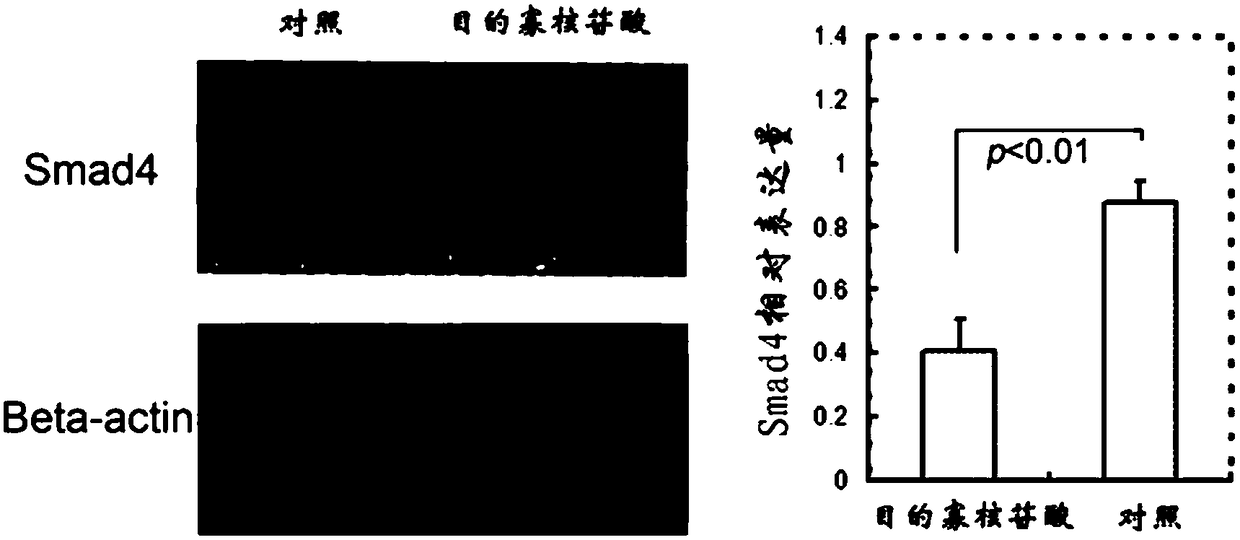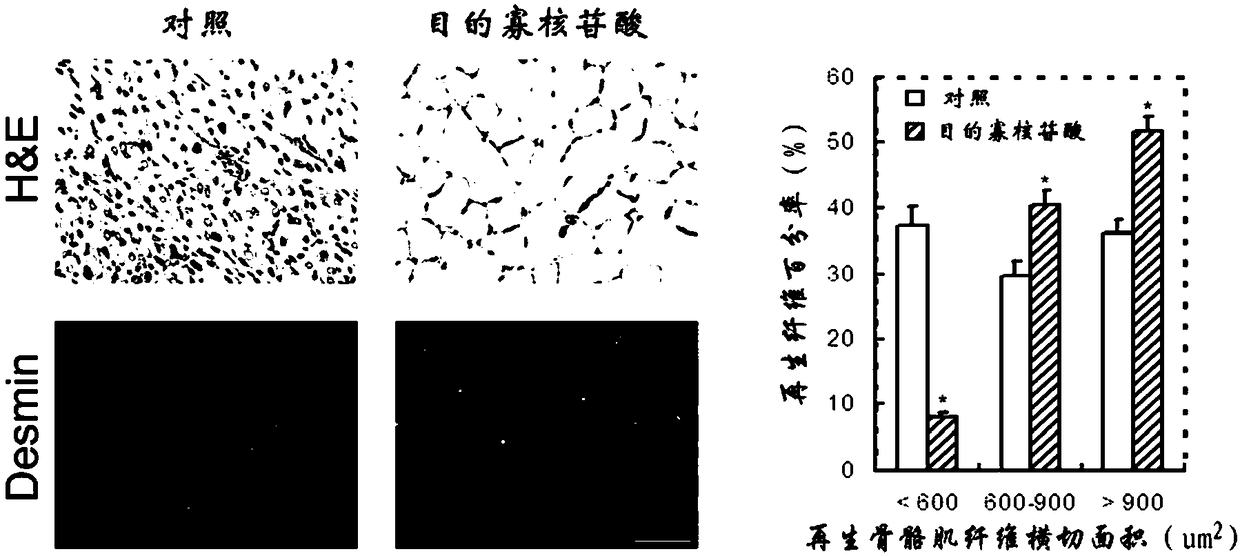Oligonucleotide for promoting repair of skeletal muscle injury, medicine and application thereof
An oligonucleotide and skeletal muscle technology, applied in the field of promoting the repair of skeletal muscle damage, can solve the problems of poor curative effect and long treatment process, and achieve the effect of low cost, good recovery of skeletal muscle function, and promotion of regeneration and repair
- Summary
- Abstract
- Description
- Claims
- Application Information
AI Technical Summary
Problems solved by technology
Method used
Image
Examples
Embodiment 1
[0030] Embodiment 1 object oligonucleotide promotes skeletal muscle myoblast myogenic differentiation
[0031] According to the high-throughput analysis of gene transcripts in various mouse tissues, it was found that the transcripts of the H19 gene were significantly highly expressed in adult skeletal muscle, and this result was verified by q-PCR. Based on this, the scientific hypothesis that the H19 imprinted gene, which functions as RNA, regulates the development and function of skeletal muscle is put forward. An oligonucleotide with potential function was screened from the H19 transcript by using the public gene function analysis software, and the mouse skeletal muscle myoblast cell line C2C12 was used as an in vitro model to investigate the effect of the target oligonucleotide on the proliferation of C2C12 cells differentiation.
[0032] C2C12 cell culture: the cell line was purchased from ATCC Company in the United States, and cultured according to the method published b...
Embodiment 2
[0052] Example 2 Objective oligonucleotide inhibits the expression of Smad4 in skeletal muscle myoblasts
[0053] The study found that the target oligonucleotide can effectively promote the myogenic differentiation of skeletal muscle myoblasts, suggesting that the target oligonucleotide may have the function of promoting the repair of skeletal muscle damage by regulating the cycle proteins of skeletal muscle cells. Studies have shown that TGF-β-Smad signaling pathway plays an important regulatory role in the process of skeletal muscle injury healing. Members of the Smad protein family, as receptor kinases downstream of TGF-β, play an important mediating function in the TGF-β signaling pathway. According to structure and function, Smads are divided into 3 subfamilies: receptor activating type (including Smad1 / 2 / 3 / 5 / 8), receptor inhibitory type (including Smad6 / 7) and general type (Smad4). The synergy between Smad4 and other Smad protein molecules is a key link in the TGF-β sup...
Embodiment 3
[0081] Example 3 Microinjection of the target oligonucleotide at the wound edge can significantly promote the regeneration of damaged skeletal muscle fibers
[0082] Based on the above examples, it is found that the target oligonucleotide has the function of promoting the myogenic differentiation of C2C12 cells, and it is speculated that the exogenous addition of the target oligonucleotide to the injured skeletal muscle may accelerate the myogenic differentiation process of the proliferated skeletal muscle myoblasts , thereby promoting the fusion and structural reconstruction of new muscle fibers. Therefore, it is planned to screen out the optimal plan of using the target oligonucleotide, observe the regeneration process of the damaged skeletal muscle by HE staining and immunohistochemistry, analyze the size of the new skeletal muscle fiber, and evaluate the therapeutic effect of the target oligonucleotide.
[0083] (1) Preparation of skeletal muscle injury regeneration model:...
PUM
 Login to View More
Login to View More Abstract
Description
Claims
Application Information
 Login to View More
Login to View More - R&D
- Intellectual Property
- Life Sciences
- Materials
- Tech Scout
- Unparalleled Data Quality
- Higher Quality Content
- 60% Fewer Hallucinations
Browse by: Latest US Patents, China's latest patents, Technical Efficacy Thesaurus, Application Domain, Technology Topic, Popular Technical Reports.
© 2025 PatSnap. All rights reserved.Legal|Privacy policy|Modern Slavery Act Transparency Statement|Sitemap|About US| Contact US: help@patsnap.com



